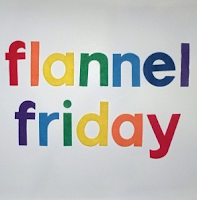The How:
Every children's librarian, whether new or seasoned, has heard about early literacy and how it's pretty much the foundation of what we do in storytimes. But while a lot of us might have the theory down pat, what about the practice?
I've been to trainings and read professional writings where the presenter will give a sentence-or-two-long literacy tip in between books/songs. The thought of doing it this way honestly made me a bit nervous. It didn't feel like my style. And frankly, I stressed out about it.
But the more I connected with other librarians on Twitter and at conferences and the like, I discovered that there were, in fact, other ways to do it. Thus, I learned how to plan my storytimes with a more "stealth" presentation for early literacy tips.
This is the method that I'm the most comfortable with. But please note that there's no one "right" way to do it. Just like everyone presents storytimes differently, the way we integrate early literacy can too.
Stealth literacy, for me, means that either before or after a book/song/rhyme I will quickly explain my reason for choosing it. Last year, Abby Johnson wrote a great blog post about the meaning behind our storytimes on the
ALSC Blog . Being the experts that we are, there's a purpose for every single song, rhyme, activity that we do. So why not share our reasoning with the parents/caregivers? Then maybe they can choose books, songs, and activities to do at home with the same kind of purposefulness.
However, I don't put the pressure on myself to always share my reasoning at every session. I only do it when it feels natural. This helps me stay more confident and relaxed when presenting storytimes. But if it works for others to plan ahead of time, that's great as well!
Here are some examples of what I might say during storytime and which skill(s)/practice(s) they encompass:
"
This book is great because it teaches your child the names of (colors, animals, etc.)."
Vocabulary/Talking
"
This book is one of my favorites and has big, bright illustrations that's perfect for sharing one on one with your child."
Print Motivation/Print Awareness/Reading
"
The song 'Apples and Bananas' is not only fun to sing, but it teaches your child all about different vowel sounds."
Phonological Awareness/Singing
"
When we do 'Open Shut Them' here in storytime, it helps your baby gain that skill of opening and closing their hands, which is an important fine motor skill."
Writing (Holding a pencil/crayon/etc.)
"
I love this interactive rhyme because you can add verses to it with your child if you like."
Playing/Talking/Vocabulary/Singing
"
Wordless books like this are wonderful because you can ask your child what's happening on each page and to help you tell the story."
Narrative Skills/Reading
The Handouts:
I also love to give out handouts, with varying degrees of success. At some libraries where I've been employed, handouts have worked very well for me. At others...not so much. At my current job, my success even varies from session to session. At the very least, I like to have a brochure about early literacy available and depending on the crowd, I will make up a weekly handout.
Here is the
early literacy brochure that we hand out to parents:
And here's an example of the handout I might make each week:
I try to include the rhymes/songs that we did that week so that parents can do them at home. I also take each of the early literacy skills/practices and think of an activity to pair with them.
The Help:
Here are some resources to help us hone our early literacy skills!
How do you incorporate early literacy into your library?



























